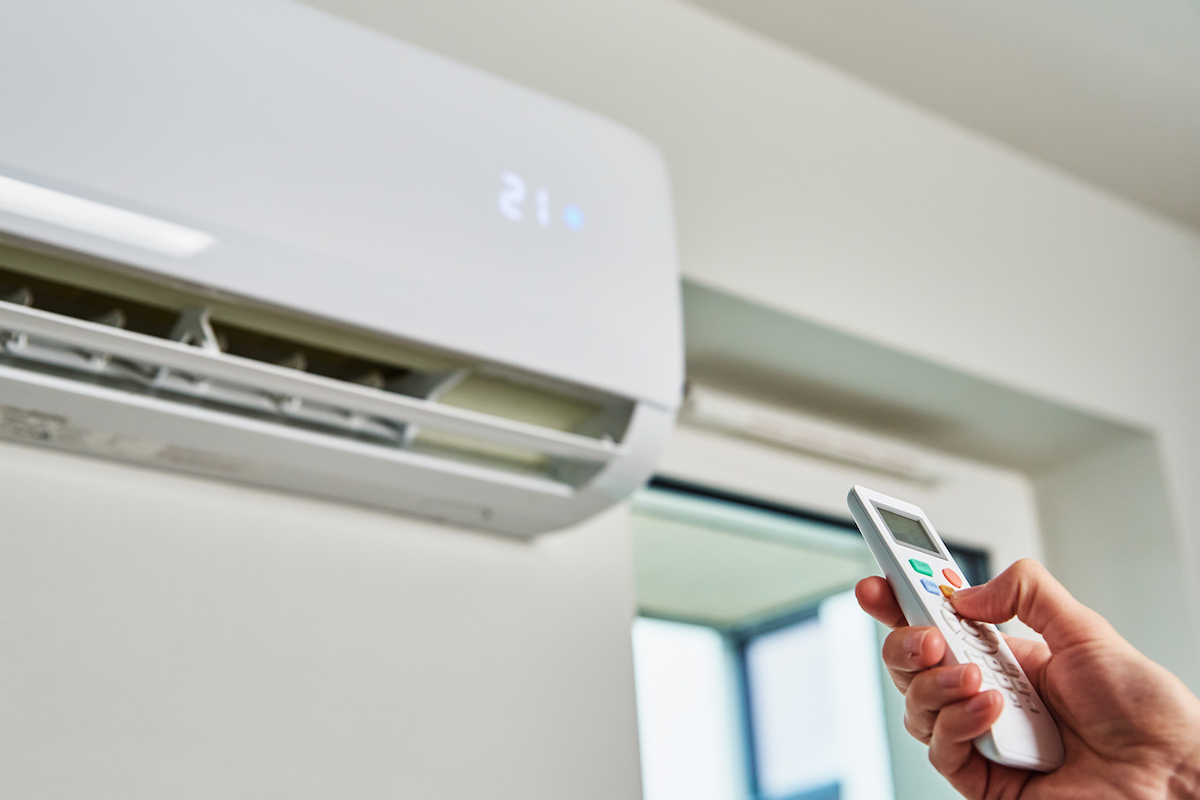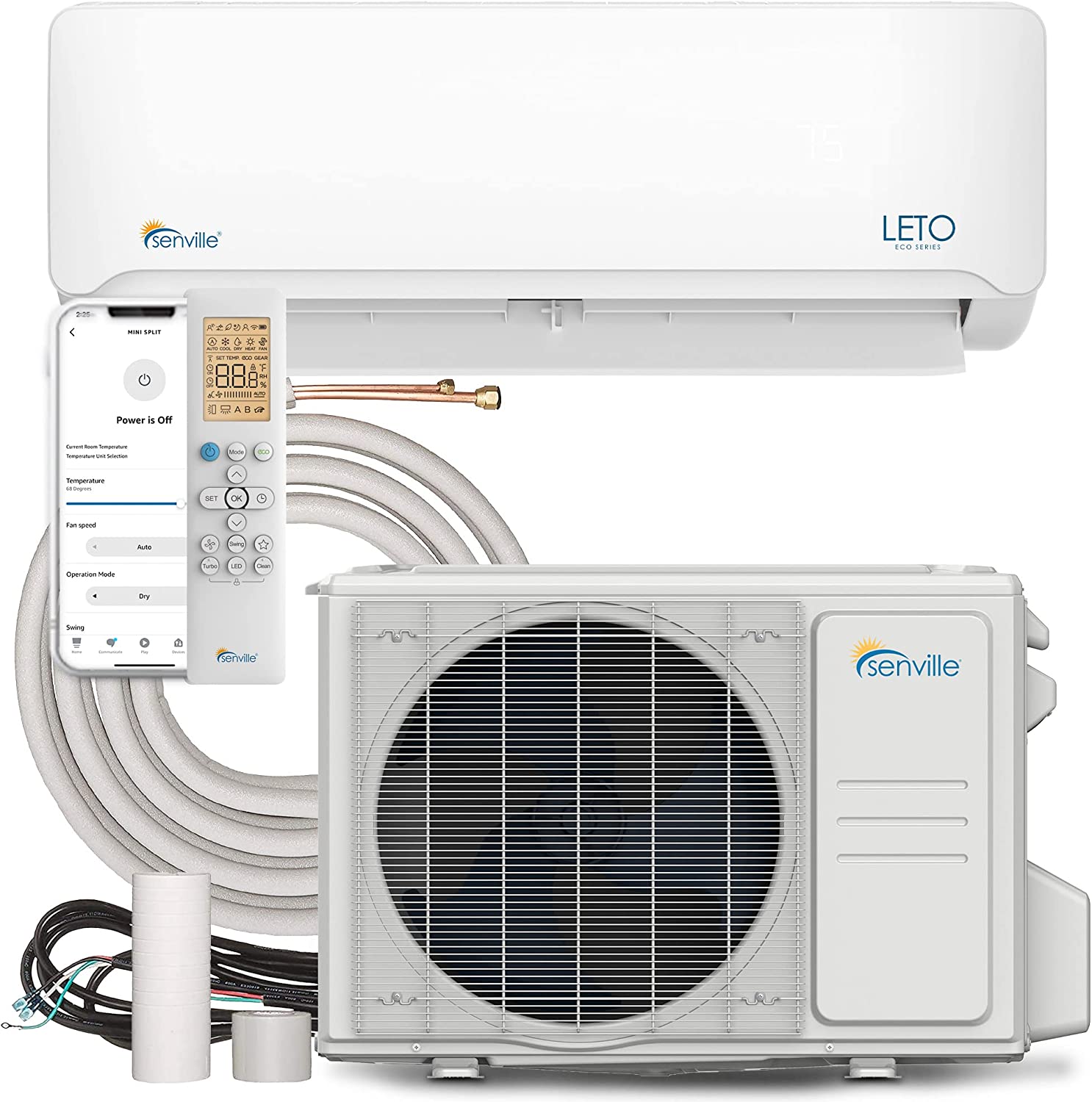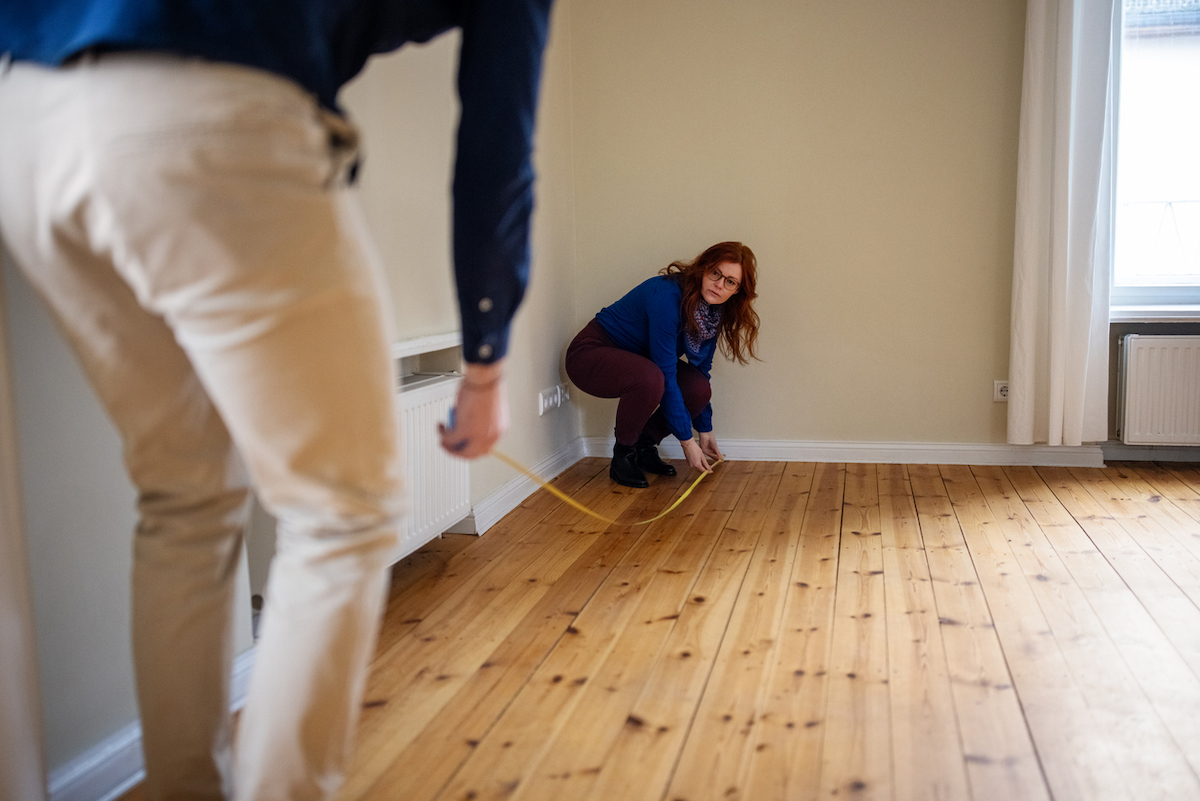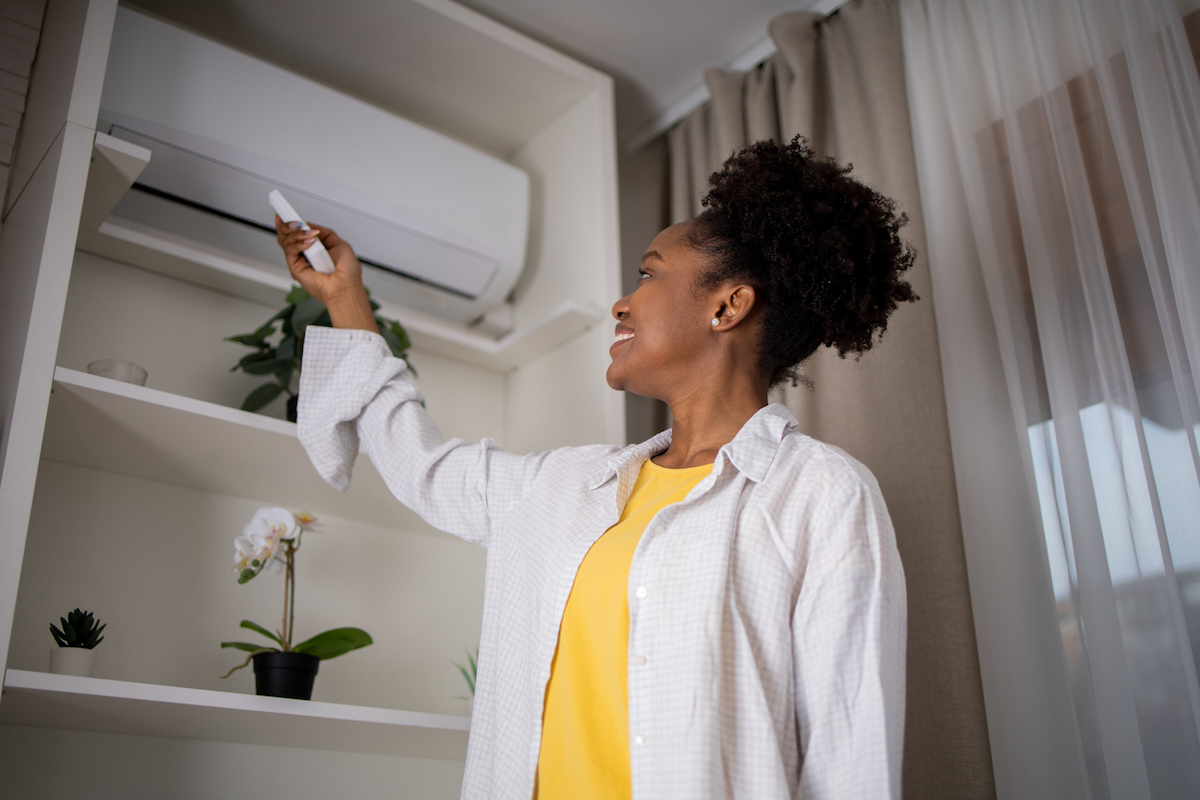

We may earn revenue from the products available on this page and participate in affiliate programs. Learn More ›
Q: I put an addition on my house and am wondering the best way to heat and cool that area. I have heard that a mini-split unit would be a good option, but I need to learn more about how it works. Also, what size mini-split do I need for my room?
A: Although the technology has been around for 30 years, mini-split ductless air systems have become more popular recently since they tend to be less expensive and 20 to 60 percent more energy efficient than central air units, run more quietly, and offer individualized control. They also last longer than traditional air conditioners. While AC units last about 10 years, mini-splits can last up to twice as long. These units are particularly helpful in homes without central air conditioning and in rooms that never seem to get cool or warm enough, such as an addition or basement.
Mini-splits use an outdoor compressor and condenser, but feed each indoor air-handling unit through a conduit that works like a heat pump. The indoor evaporating unit can be mounted to a wall or ceiling in each room where homeowners are looking for individualized temperature control.
The price of a mini-split unit depends on the size required for the space. The most common size is a 12,000 BTU air conditioner unit, which usually costs between $700 and $3,200. It is also important to evaluate the unit’s Seasonal Energy Efficiency Ratio (SEER) rating, which explains how much energy and money the unit will use over the course of 1 year. The higher the SEER rating, the more efficient the unit and the lower utility bills will be.
Our Recommendation: Senville LETO Series Mini Split Air Conditioner Heat Pump, 24000 BTU 208/230V at Amazon for $1,199.99
With its ability to heat as well as cool, a sleek design, and ultraquiet operation, this ductless air conditioner is one of the best all-around units on the market. This model also earned the Energy Star label, which means it is independently certified to save energy, save money, and help protect the planet. In fact, Energy Star-certified mini-splits use up to 60 percent less energy than standard home electric radiators.

Proper mini-split sizing ensures that the system efficiently maintains comfortable indoor temperatures.
For a mini-split to perform properly—which means it can efficiently and effectively heat or cool a room or home—it needs to be sized correctly. The system should have a British thermal unit (BTU) rating that matches the specifications of the room. BTU is the measurement of thermal energy; 1 BTU represents the power to cool or heat 1 pound of water by 1 degree Fahrenheit. Larger rooms require higher BTU ratings. A 6,000 BTU mini-split is the lowest possible rating, while the highest is 56,000 BTUs.
It is also critical to make sure the mini-split sizing is neither too small nor too big for the living space. If the unit is too small, it will work too hard and run continuously. Even though it will be on so much, it still cannot heat or cool the space sufficiently. This will result in more energy use and higher utility bills. Unfortunately, this will also cause the unit to age more quickly and need service frequently.
On the other hand, when mini-split units are too large for a space, it can cause short cycling. This means it will turn on and then off right away because it heats or cools the space too quickly, resulting in higher energy bills, more frequent repairs, and even mini-split failure. Short cycling also produces uneven temperatures and poor humidity control, which can be problematic. If mini-split units are not properly maintained, mold and mildew can grow and cause possible health issues.

When sizing mini-splits for individual rooms, multiply the square footage by 25 to determine the BTU recommendation.
To determine the correct size of a ductless AC or mini-split heat pump, perform a load calculation. This industry-based formula determines the correct amount of warm or cold air needed to ensure that an area is at a constant and comfortable temperature. A load calculation involves measuring a home’s or room’s square footage, assessing other physical factors that can influence the sizing need, and then determining the correct BTU to effectively and efficiently heat or cool a room of that size.
Online load calculators can help, or you can follow these simple steps to determine the best size mini-split unit for a specific space:
- Figure out the square footage of the room by measuring its length and width and multiplying the two numbers.
- For a round room, measure the distance between the wall and the center of the room. Multiply that number by itself, and then multiply the result by 3.14159 (pi).
- Convert the square footage to BTUs by multiplying by 25.
- Repeat this process for each room separately to determine the correct size mini-split unit needed for the entire space.
For example, if a room is 24 feet by 23 feet, multiply the numbers to get 552 square feet. Then multiply 552 by 25 to get 13,800. Since some estimation is involved, that means a 14,000 BTU air conditioner mini-split unit would be required for that size space.

Other factors such as a home’s age, quality of insulation, and the outdoor climate should be factored into mini-split sizes.
Sizing mini-split systems is a bit more complicated than just room size, since a variety of factors can play a role in load calculation. For starters, the climate outside can affect the temperature inside a home, therefore affecting the work and size of a mini-split. In locations where the temperature frequently rises above 90 degrees Fahrenheit, the BTU rating of the system could increase by 30 percent or more to be effective.
Ceiling height also can affect the unit size since it increases the overall size of a room. If the ceiling height is greater than the standard 8 feet, it is recommended to increase the BTU capacity of the mini-split by at least 20 percent. Age and insulation also play a role. Older homes with poor insulation require more power to heat or cool a room, so the BTU rating needs to be increased by at least 30 percent to stay comfortable. On the other hand, newer homes with effective insulation will probably need fewer BTUs than normal for the same space.
Additional factors that could affect mini-split sizing include the number of windows and doors and how leaky they are, direct sunlight heating the room, kitchen appliances like ovens and stoves that are a source of heat, the number of occupants in the space, and floor type (carpet traps heat better than hardwood).
Mini-Split Sizing Chart
Wondering what the best mini-split sizes are for various rooms in your home? Refer to the mini-split sizing chart below for the 10 most common room sizes and recommended mini-split BTUs for each.
| Room Size (square feet) | BTU Capacity |
| 150-200 | 6,000 |
| 250-300 | 7,000 |
| 300-350 | 8,000 |
| 350-400 | 10,000 |
| 400-500 | 12,000 |
| 500-600 | 15,000 |
| 600-700 | 18,000 |
| 700-950 | 24,000 |
| 950-1,200 | 30,000 |
| 1,200-1,500 | 36,000 |
